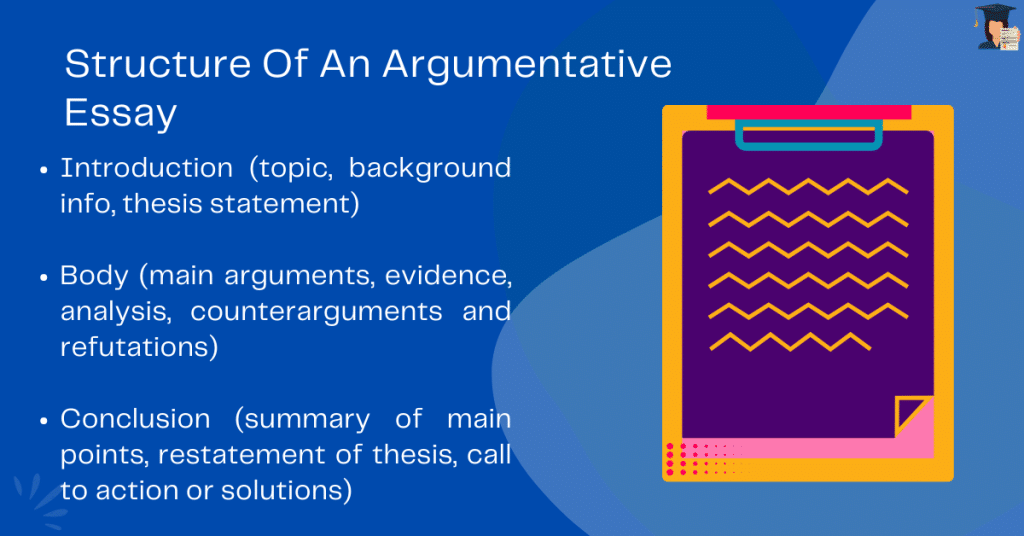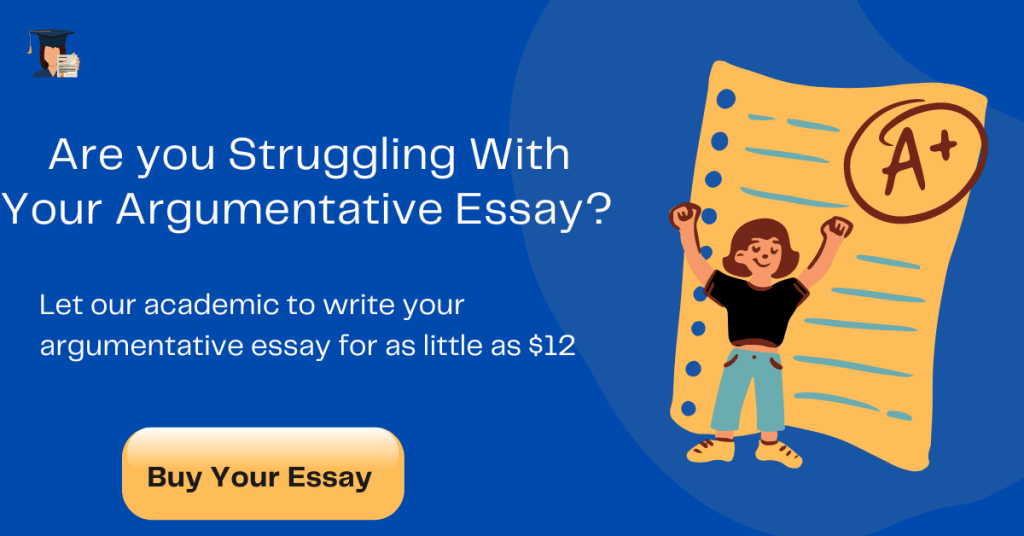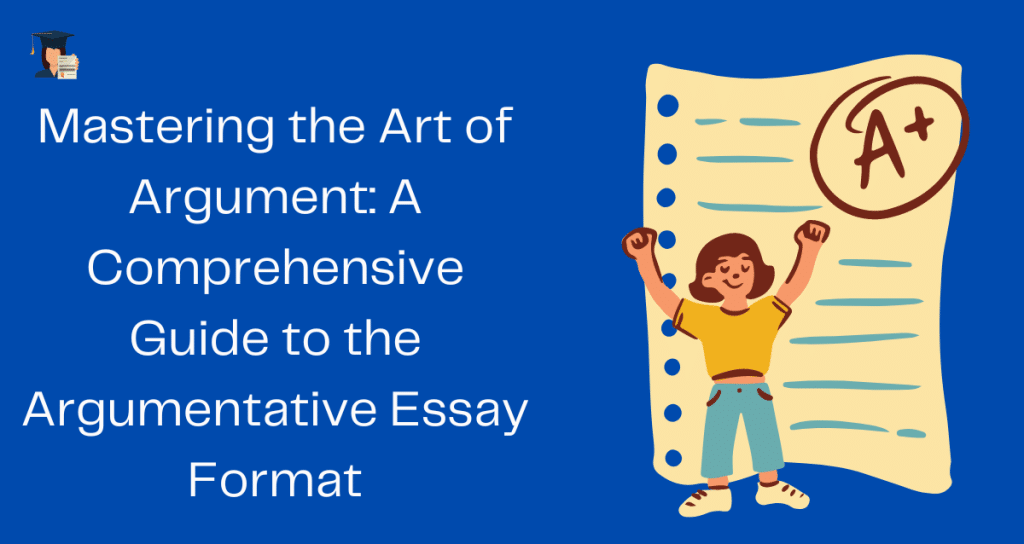An argumentative essay is a type of essay that aims to present a well-reasoned argument on a specific topic. It requires the writer to use logical reasoning and persuasive language to convince the reader of their viewpoint. However, an argumentative essay can be challenging, especially if you’re unfamiliar with the structure and format. This article will discuss the argumentative essay structure and provide useful tips and templates for creating an effective argumentative essay outline.
We will cover everything from the general argumentative essay outline to the classical, Rogerian, and Toulmin argumentative essay outline templates. Additionally, we’ll highlight common mistakes to avoid in your outline and provide examples of successful argumentative essay outlines to guide you. By the end of this article, you will clearly understand how to create an effective argumentative essay outline that will help you craft a compelling and well-supported argument. Try our argumentative essay writing service if you are still struggling to develop an outline.
How is an argumentative essay structured?
An argumentative essay is typically structured in the following way:
Introduction: The essay’s first paragraph introduces the topic, provides background information, and includes a strong thesis statement that presents the writer’s argument.
Body: The essay’s body paragraph contains the main arguments supporting the thesis statement. Each argument is presented in a separate paragraph. Each paragraph should include a topic sentence that introduces the argument, a piece of evidence that supports the argument, and an analysis that explains how the evidence supports the argument. Additionally, the body should include counterarguments and refutations that address opposing viewpoints.
Conclusion: The final paragraph of the essay summarizes the main points of the essay and restates the thesis statement in a compelling way. Additionally, the conclusion may include a call to action or offer solutions to the problem presented in the essay.
It’s important to note that the structure of an argumentative essay may vary depending on the assignment’s specific requirements or the writer’s preference. However, the above structure provides a general guideline that can be adapted to suit different needs.

How to create an argumentative essay outline
To create an argumentative essay outline, follow these steps:
1. Choose a topic
Choose a topic that is interesting and relevant to you. As an argumentative essay requires you to present and defend your position on a controversial issue and look for topics with opposing viewpoints. There are several argumentative essay topics to pick from
2. Develop a thesis statement
Your thesis statement should be clear, concise, and focused. It should state your argument and the main points you will use to support it. This statement should be placed in the introduction of your essay.
3. Organize your ideas
Create a list of the main arguments that support your thesis statement. Group similar arguments together and arrange them in a logical order. This will help you develop a coherent and well-organized essay.
4. Create a rough outline
Using your list of arguments and supporting evidence, create a rough outline that includes an introduction, body, and conclusion. Each main argument should be a separate section in the body of the outline.
5. Refine your outline
Review your rough outline and make any necessary changes. Ensure that each section flows logically and that each argument is well-supported with evidence. The outline should provide a clear roadmap for the writing process of your essay.
6. Add details
Once you have a solid outline, add specific evidence, quotes, and examples to each section. This will help to support your arguments and make your essay more persuasive.
7. Review and revise
Review your outline to ensure it is clear, concise, and well-organized. Make any necessary revisions to improve the overall structure and flow of the essay. Revising your outline before beginning to write the essay is important to ensure you are on the right track.
Classical argumentative essay outline
This general argumentative essay format follows the basic structure of an argumentative essay, with an introduction that includes a hook to grab the reader’s attention, background information to provide context, and a clear thesis statement that presents the main argument. The body of the essay contains three main arguments, each supported by evidence and followed by a counterargument and refutation. The conclusion restates the thesis statement, summarizes the main arguments, and may include a call to action or closing thoughts. Remember that this is just a template; you can modify it to fit your essay requirements.
I. Introduction
A. Hook
B. Background information
C. Thesis statement
II. Body
A. Main argument #1
Supporting evidence
Counterargument and refutation
B. Main argument #2
Supporting evidence
Counterargument and refutation
C. Main argument #3
Supporting evidence
Counterargument and refutation
III. Conclusion
A. Restate thesis statement
B. Summarize main arguments
C. Call to action or closing thoughts
Rogerian argumentative essay outline template
This template follows the Rogerian approach to argumentation, which seeks to find common ground between opposing viewpoints and propose a compromise or solution that satisfies both sides. The introduction acknowledges the opposing viewpoints and presents a thesis statement considering both perspectives. The background section provides context for the issue and discusses the strengths and weaknesses of each viewpoint.
The common ground section identifies shared values or goals between the two sides and emphasizes the potential benefits of finding common ground. The opposing viewpoint section presents the opposing argument and acknowledges its validity. The thesis and support section restates the thesis statement and presents the main argument and supporting evidence. The solution section proposes a compromise or solution that addresses both sides of the issue and aligns with shared values or goals. The conclusion restates the thesis statement and main arguments and includes a call to action or closing thoughts.
I. Introduction
A. Hook
B. Brief explanation of the issue and its opposing viewpoints
C. Thesis statement that acknowledges both sides of the argument
II. Background
A. Explanation of the issue and its significance
B. Description of the opposing viewpoints and their strengths and weaknesses
III. Common Ground
A. Identification of shared values or goals between both sides
B. Acknowledgment of the legitimacy of the opposing viewpoint
C. Explanation of the potential benefits of finding common ground
IV. Opposing Viewpoint
A. Presentation of the opposing viewpoint with supporting evidence
B. Acknowledgment of the validity of the opposing viewpoint
C. Discussion of areas where the opposing viewpoint has merit
V. Thesis and Support
A. Restatement of the thesis statement
B. Presentation of the main argument and supporting evidence
C. Explanation of how the main argument aligns with shared values or goals
VI. Solution
A. Proposal of a compromise or solution that addresses both sides of the issue
B. Discussion of the potential benefits and drawbacks of the proposed solution
C. Explanation of how the proposed solution aligns with shared values or goals
VII. Conclusion
A. Restatement of the thesis statement and main arguments
B. Final thoughts and recommendations
C. Call to action or closing thoughts
Toulmin argumentative essay outline template
This template follows the Toulmin approach to argumentation, which emphasizes using warrants and backing to support a main claim or argument. The introduction presents the issue and opposing viewpoints and includes a clear and concise thesis statement. The claim section presents the main claim or argument and includes supporting evidence. The warrant section explains the reasoning behind the claim and presents additional evidence to support the warrant.
The backing section includes supporting evidence to support the warrant. The counterargument section presents opposing viewpoints and counterarguments and refutes them with supporting evidence. The rebuttal section acknowledges the legitimacy of the counterargument but presents evidence to support the main claim despite the counterargument. The conclusion recaps the main claim and supporting evidence and includes a call to action or closing thoughts.
I. Introduction
A. Hook
B. Explanation of the issue and its opposing viewpoints
C. Clear and concise thesis statement that presents the writer’s argument
II. Claim
A. Presentation of the main claim or argument
B. Explanation of the significance of the claim
C. Supporting evidence to back up the claim
III. Warrant
A. Explanation of the reasoning behind the claim
B. Presentation of additional evidence that supports the warrant
C. Explanation of why the warrant is necessary for the argument
IV. Backing
A. Supporting evidence that supports the warrant
B. Explanation of why the backing is necessary for the argument
V. Counterargument
A. Presentation of opposing viewpoints and counterarguments
B. Explanation of why the counterarguments are not valid
C. Supporting evidence to refute the counterarguments
VI. Rebuttal
A. Acknowledgment of the legitimacy of the counterargument
B. Presentation of evidence that supports the main claim despite the counterargument
C. Explanation of why the main claim is still valid despite the counterargument
VII. Conclusion
A. Recap of the main claim and supporting evidence
B. Final thoughts and recommendations
C. Call to action or closing thoughts

Tips for Writing an Effective Argumentative Essay Outline
Here are actionable tips for writing an effective argumentative essay outline
Use Parallel Structure
Use parallel structure to organize your arguments and make your outline easy to read. This means using the same grammatical structure for each argument and supporting point.
Be Specific
Be specific in your outline by including detailed examples, statistics, and quotes to support your arguments. This will help to make your essay more persuasive and convincing.
Be Concise
Use concise language and avoid unnecessary words or phrases. This will help to keep your outline focused and easy to follow.
Use Strong Transitions
Use strong transitions between each section of your outline to make your argument clear and easy to follow. This includes using transitional words and phrases, such as “however,” “in addition,” and “moreover.”
Anticipate Counterarguments
Anticipate counterarguments in your outline and address them with supporting evidence. This will show that you have considered multiple viewpoints and strengthen your overall argument.
Seek Feedback
Share your outline with peers or an instructor for feedback. This can help you to identify areas that need improvement and ensure that your argument is clear and effective.
By following these actionable tips, you can create an effective argumentative essay outline that will help you to craft a compelling and well-supported argument.
Common Mistakes to Avoid in Argumentative Essay Outlines
By avoiding the following common mistakes, you can create an effective argumentative essay outline that will help you to craft a compelling and well-supported argument.
Lack of Research
Failing to conduct sufficient research can weaken your argument and result in a poorly-supported essay. Ensure that you gather credible sources and evidence to support your arguments.
Lack of Organization
A poorly organized outline can make it difficult for the reader to follow your argument. Ensure that your outline is well-organized and easy to follow.
Lack of Specific Evidence
Failing to include specific evidence to support your arguments can weaken your essay. Ensure that you use detailed examples, statistics, and quotes to back up your claims.
Failure to Address Counterarguments
Ignoring or failing to address counterarguments can weaken your argument and reduce its persuasiveness. Ensure that you acknowledge and address counterarguments in your outline.
Lack of Clarity
A lack of clarity in your outline can make it difficult for the reader to understand your argument. Ensure that your outline is clear and concise and that your thesis statement is well-defined.
Inadequate Formatting
Failing to follow formatting guidelines can result in a poorly-presented essay. Ensure that your outline follows the formatting guidelines specified by your instructor or academic institution.
Examples of Successful Argumentative Essay Outlines
Here are some examples of successful argumentative essay outlines:
Example 1: “The Benefits of a Plant-Based Diet”
I. Introduction
A. Hook: Start with a statistic or fact related to plant-based diets
B. Background information: Provide information about the rise of plant-based diets
C. Thesis statement: Argue that a plant-based diet has many benefits for health, the environment, and animal welfare.
II. Body
A. Main argument #1: A plant-based diet promotes health
- Supporting evidence: Research studies and statistics
- Counterargument and refutation: Address common criticisms of plant-based diets
B. Main argument #2: A plant-based diet is environmentally friendly
- Supporting evidence: Environmental studies and statistics
- Counterargument and refutation: Address common criticisms of plant-based diets and the environment
C. Main argument #3: A plant-based diet is better for animal welfare
- Supporting evidence: Ethical considerations and animal welfare studies
- Counterargument and refutation: Address common criticisms of plant-based diets and animal welfare
III. Conclusion
A. Restate thesis statement: Reiterate the benefits of a plant-based diet
B. Summarize main arguments: Briefly summarize the main arguments and evidence presented
C. Call to action: Encourage readers to consider adopting a plant-based diet or reducing meat consumption.
Example 2: “The Effects of Social Media on Mental Health”
I. Introduction
A. Hook: Start with a shocking statistic or fact about social media use
B. Background information: Provide information about the prevalence of social media use and its impact on mental health
C. Thesis statement: Argue that social media hurts mental health and well-being.
II. Body
A. Main argument #1: Social media use can lead to depression and anxiety
- Supporting evidence: Research studies and statistics
- Counterargument and refutation: Address common criticisms of the link between social media use and mental health
B. Main argument #2: Social media use can lead to addiction
- Supporting evidence: Research studies and statistics
- Counterargument and refutation: Address common criticisms of the link between social media use and addiction
C. Main argument #3: Social media use can lead to negative body image and self-esteem issues
- Supporting evidence: Research studies and statistics
- Counterargument and refutation: Address common criticisms of the link between social media use and body image/self-esteem issues
III. Conclusion
A. Restate thesis statement: Reiterate the negative impact of social media on mental health
B. Summarize main arguments: Briefly summarize the main arguments and evidence presented
C. Call to action: Encourage readers to limit social media use and prioritize mental health and well-being.
These examples demonstrate effective argumentative essay outlines with a clear thesis statement and supporting evidence for the main arguments. They also address potential counterarguments and provide a call to action or closing thoughts.
Conclusion
In conclusion, an argumentative essay outline is crucial to crafting a compelling argument. You can create a well-supported and persuasive argument by following a structured outline, incorporating specific evidence, acknowledging counterarguments, and seeking feedback. Additionally, you can ensure that your outline and subsequent essay are strong and effective by avoiding common mistakes such as a lack of research, organization, or clarity.
Whether using a general, classical, Rogerian, or Toulmin argumentative essay outline, remember to present your arguments logically and cohesively and support them with strong evidence. With a well-crafted argumentative essay outline, you can confidently present your argument and persuade your audience to see things from your point of view. Remember, you can hire an argumentative essay writer to help you develop an outline.
FAQs
To write an outline for an argumentative essay, start by choosing a strong topic and conducting thorough research. Then, organize your ideas into a clear and logical structure, including a thesis statement and supporting arguments. Use parallel structure, specific evidence, strong transitions, and anticipate counterarguments to create an effective outline.
The 5 parts of an argumentative essay include:
Introduction: includes a hook, background information, and a clear thesis statement
Body: includes supporting arguments and evidence to support the thesis statement
Counterarguments: presents opposing viewpoints and counterarguments and refutes them with evidence
Rebuttal: acknowledges the legitimacy of counterarguments but presents evidence to support the main argument
Conclusion: summarizes the main arguments and evidence and includes a call to action or closing thoughts.
The first step to creating an argumentative essay outline is to choose a strong topic and conduct thorough research. This will help you identify your main arguments and supporting evidence, which can then be organized into a clear and logical structure.
The purpose of an outline for an argumentative essay is to organize your thoughts and arguments into a clear and logical structure. This helps to ensure that your essay is well-supported, well-organized, and effective in persuading your audience to see things from your point of view. An outline also helps you anticipate and address potential counterarguments, strengthening your argument.



